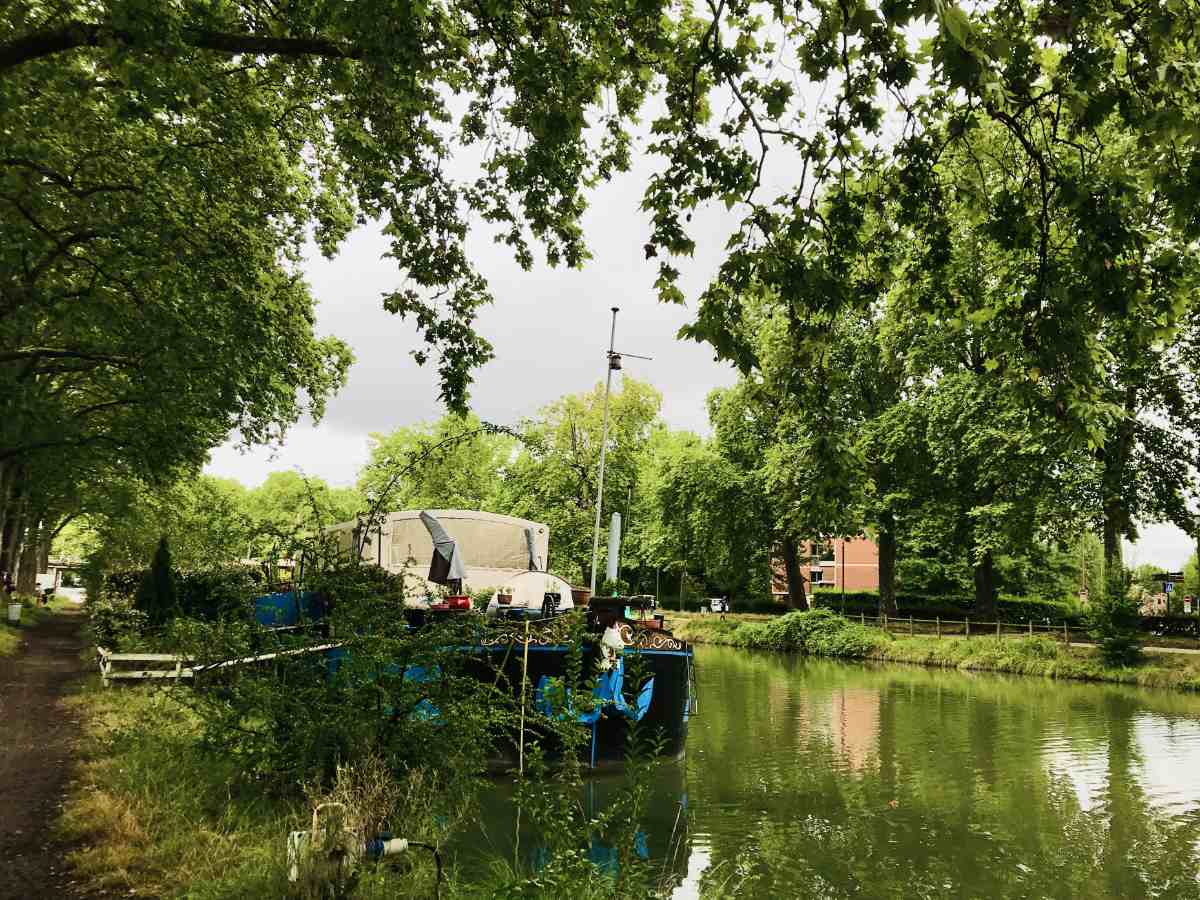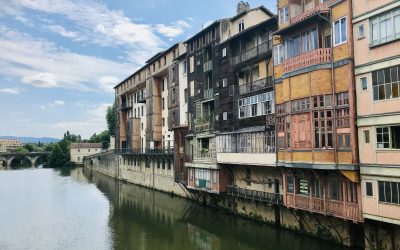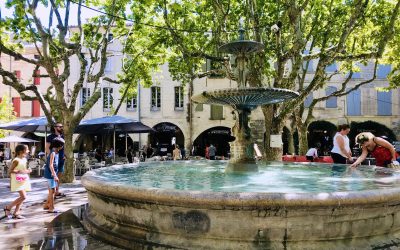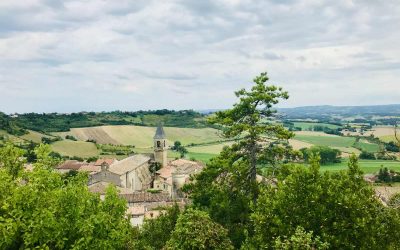A man-made river, the Canal du Midi in the Occitanie region is considered one of the greatest engineering feats in France, if not the world. But it is its surrounding scenic beauty that attracts the visitors today, rather than the engineering.
At over 120 miles (193 km) long, the canal connects the Garonne river which starts in the Atlantic, and the Canal de Garonne to the Mediterranean sea.
In effect, this waterway links the Mediterranean and the Atlantic ocean, making it a crucially important crossroad within France rather than having to go around Spain and the Iberian coastline. As such, it is sometimes called the Canal des Deux mers (the “canal of two seas”).
It offers an excellent way of seeing the French countryside, so if you are planning on being in the area, it is definitely a sight not to be missed. With a perfect balance between nature and culture, traveling along this beautiful canal is just what you may be looking for.
So let’s explore its how the Canal du midi was built and the best things to see along way, shall we? Allons-y!
History
The idea for a canal here was debated since the days of the Roman empire as a mode of transport and a trade route, but always met with failure.
It was finally ordered by Sun King Louis XIV of France in 1666 (who also built the Palace of Versailles), who let his engineer Pierre-Paul Riquet take the lead on the project. Riquet would spend much of his own fortune to ensure that the Canal was completed in 1681.
After completion, the Canal was used to transport wheat and wine products from the Languedoc to Toulouse, Bordeaux, and Marseille, and as a way to collect salt tax from the trade. It has 91 locks across the canal to allow the water levels to be adjusted. There are also 6 large aqueducts to allow the canal to cross rivers that could disrupt the water flow.
These days, it is its scenic waterways and natural landscapes that make it so famous. The canal has been part of the UNESCO World Heritage sites list since 1996. It is still in use, although you will mostly see pleasure craft on the canal rather than commercial vessels.
Where does the Canal start and stop?
The canal runs 120 miles (193 km) from the city of Toulouse down to the Sète and Étang de Thau near the Mediterranean sea. There are 91 working locks along the Canal, regulating the water flows.
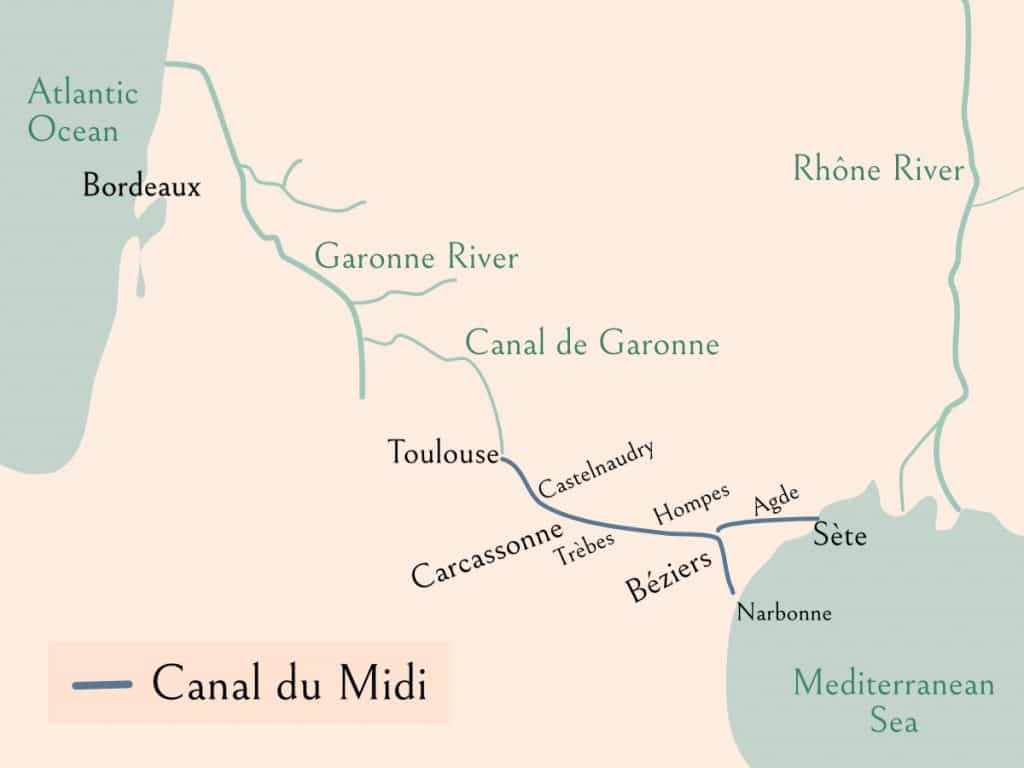
The speed limit is generally 4 mph (6 kph / 3.3 knots) for barges and pleasure boats, reduced to 2.5mph (4 kph) for the passage of movable bridges and navigation at night where allowed.
Best stops along the way
There are several lovely segments along the Canal du Midi, and depending on how much time you have, you can explore the entire length of the canal or just a portion of it.
You can travel to each location by boat, bike, or car. I’ve kept things in geographical order, so that it is easy to follow along:
1) Starting off in Toulouse
The Canal du Midi starts off in Toulouse off of the Canal de Garonne. With a population of around 500k, Toulouse is the 4th largest city in France.
It is famous for its buildings of beautiful pink terracotta brick, which have given it the nickname La Ville Rose (meaning “Pink city”).
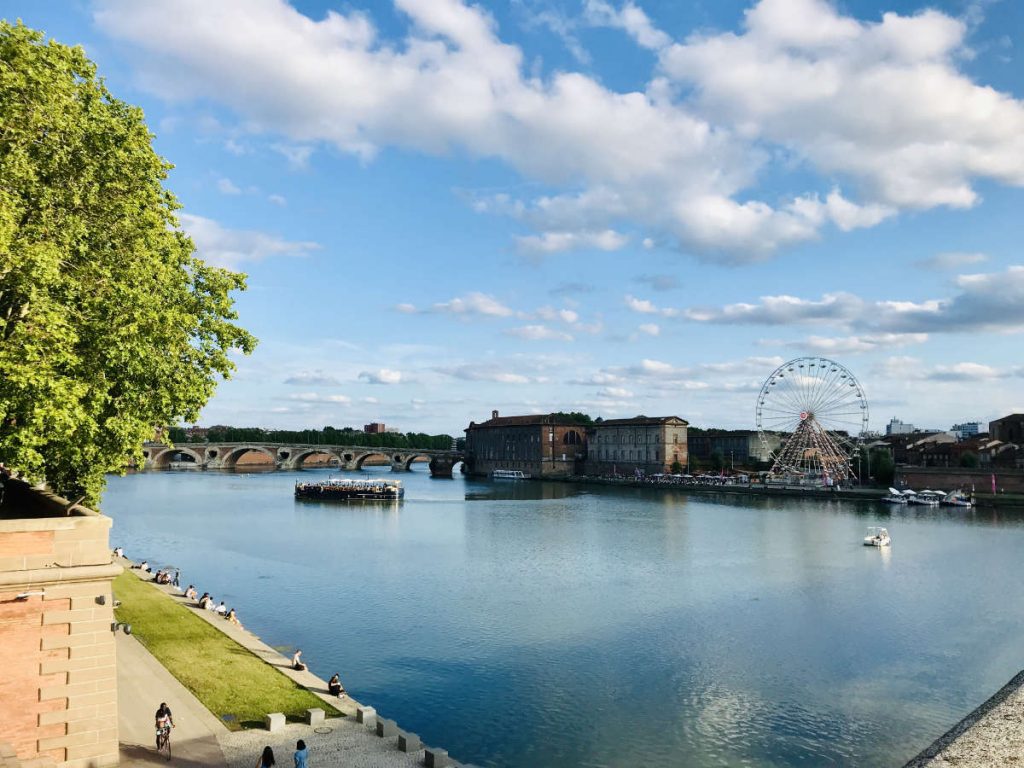
From the quays of the river in Toulouse, there are small tour boats that go along the river and into the locks of the Canal du Midi for a short tour.
The canal stretches into the outskirts of Toulouse where you can already see some of the famous houseboats that the Canal du Midi is so famous for. You can also go for a bike ride with a tour guide from Toulouse, if you wish to explore as much as possible. You can read more about visiting Toulouse here.
2) Try the cassoulet in Castelnaudry
About 31 miles (50 km) away from Toulouse is the little market town of Castelnaudry. It is one of the main ports of the Canal du Midi, and offers beautiful views of the Montagne noire in the background.
If you are looking to avoid big city Toulouse, you may wish to start your tour of the Canal du Midi from Castelnaudry instead.
But the real reason the town is famous is because this is where the sumptuous dish of the south west, the cassoulet was born.
A cassoulet is basically a hearty bowl, consisting of copious amounts of sausages, meat, and beans that have been cooked for hours for maximum perfection.
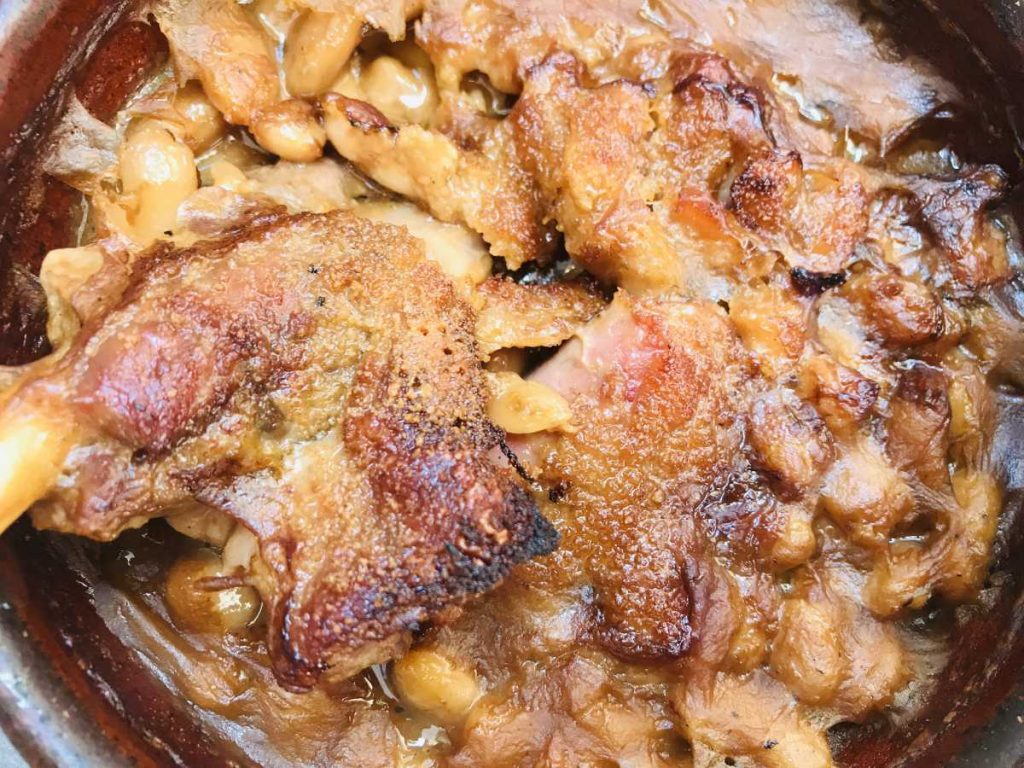
The recipe dates back to the mid-1300s from the town of Castelnaudary near Toulouse. (There is also a Carcassonne version of the cassoulet adds partridge meat to the recipe).
This traditional dish from Occitanie can be easily found in brasseries and restaurants in Castelnaudary and in the towns nearby, so if you eat meat, you should definitely give it a try.
3) Explore the Cité of Carcassonne
Continuing along the Canal du Midi, you will arrive at the incredible fortress town of Carcassone.
Boats take off and arrive from the port in front of the SNCF train station. There are short 2 hour boat cruises that leave from here as well, if you want to explore just a portion of the canal.
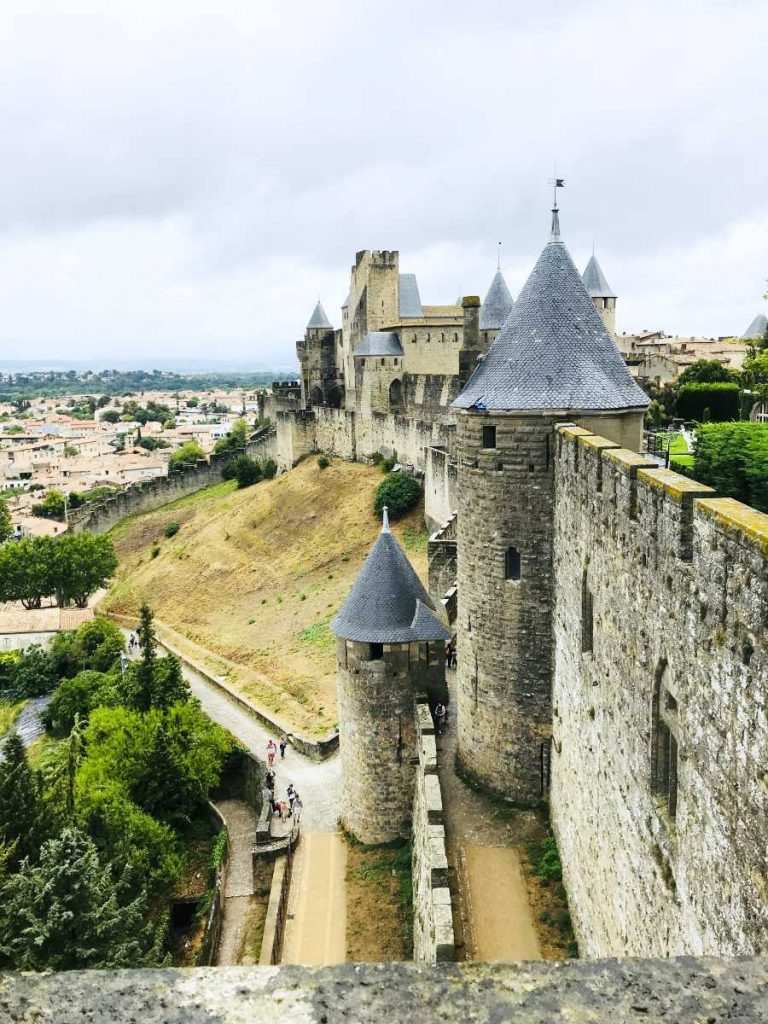
A UNESCO world-heritage site, the Cité de Carcassone is one of the largest of its kind with two outer walls and 53 towers.
The impressive citadel towers on a hilltop, surrounded by wide, stone ramparts that you can walk along and explore. There is quite a lot of see, so to make the most of your day, I suggest taking a guided tour when you arrive at Carcassonne. You can read more about visiting Carcassonne here.
4) The Port of Trèbes
Another big stop along the Canal du Midi is the port of Trèbes. A small village of around 5000 people, here you can see the Orbiel Aqueduct bridge that was built by the great French architect Vauban in the 17th century (who also built many ramparts all over France).
Other charming features a few hundred meters outside the historic center of the village is the Rode bridge and the triple écluse de Trèbes. The triple lock has three bassins to control the water flow and a large monumental staircase with a drop of more than 7 meters.
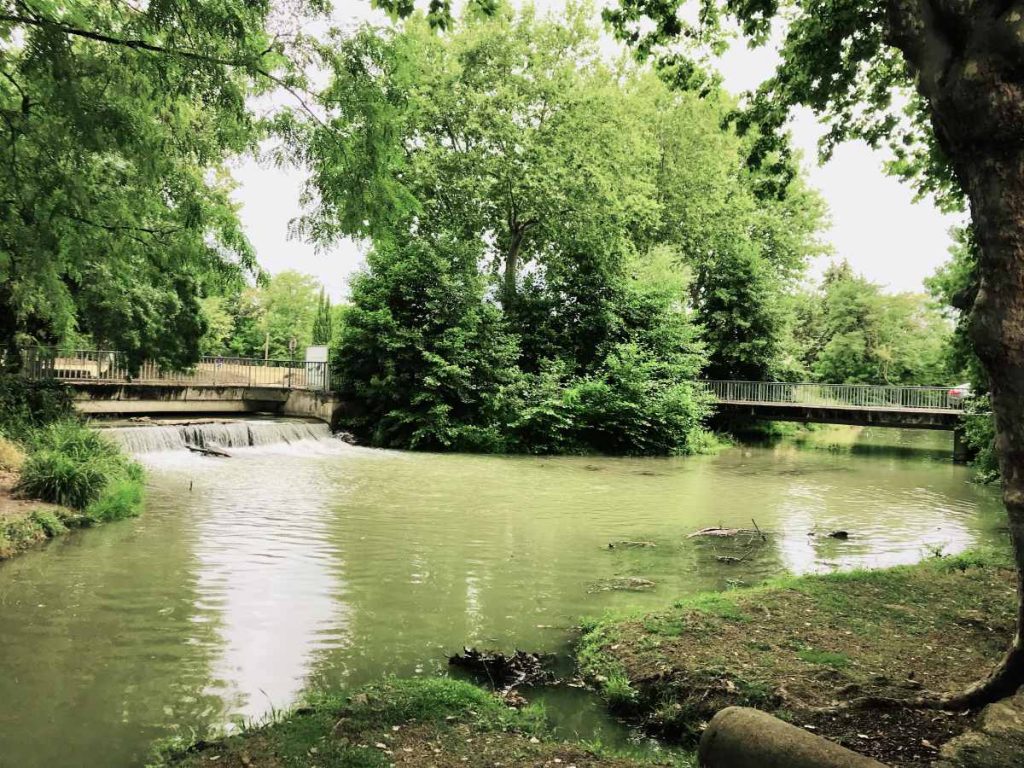
5) Walking around Hompes
If you skipped lunch in Castelnaudry, you can instead stop off at one of the many restaurants along the Canal du Midi in the village of Hompes.
This small village of only 600 inhabitants, Hompes has been around since Gallo-Roman times. It is located on border of the Minervois vineyards and you can visit the Maison des vins du Minervois in the village to go for a wine tasting of some local Languedoc-Roussillon wines.
And if you want to go for a swim, the lac de Jouarres is about 10 minute walk from the village center.
6) Exploring Béziers
Unlike Trèbes and Hompes which are small villages, Béziers is a much bigger town of around 78,000 people. Béziers is one of the oldest cities in France dating back to 575 BC, only slightly younger than nearby Marseille which was founded in 600 BC.
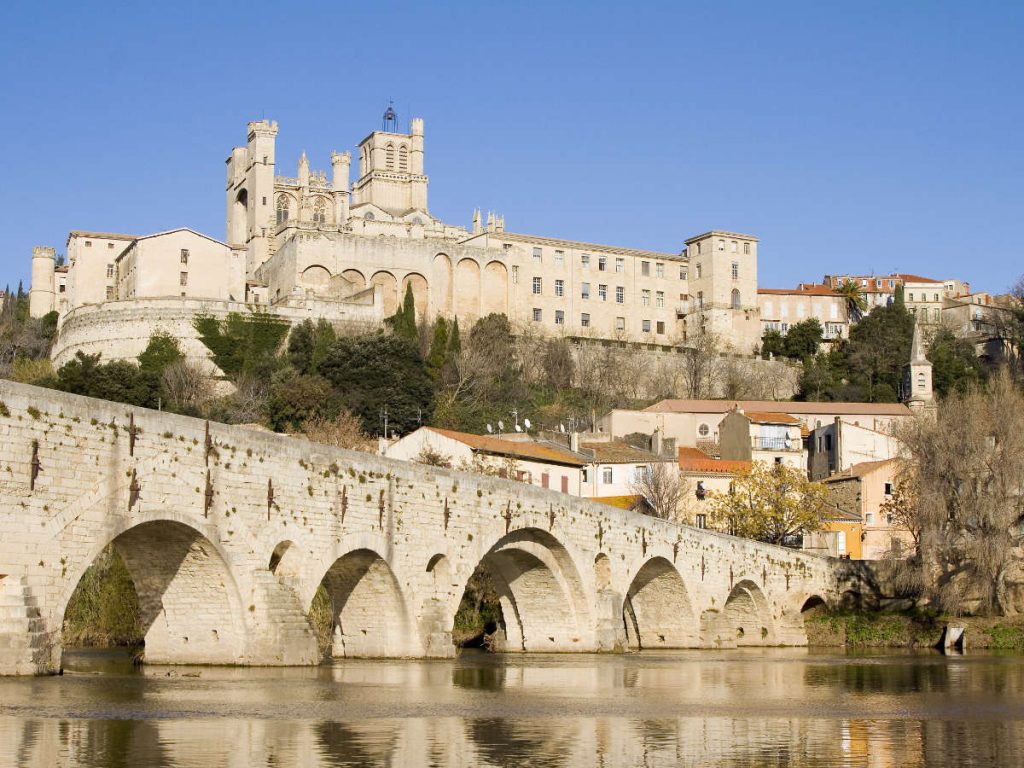
In the outskirts of Béziers, you will find the famous Nine Locks of Fonseranes (in French known as “les 9 écluses de Fonseranes“).
This is one of the most spectacular engineering feats on the Canal du Midi.
It is a series of 8 locks and 9 basins, called the ‘Octuple’. The locks allow boats to navigate a difference in height level of 69 feet (21.50 metres) over a distance length of 1000 feet (300 metres) with precision.
You can rent bikes or electric boats in Béziers for a couple of hours to explore the area. On foot, Béziers has a lovely old town center with a cathedral and an art museum.
In addition, every year in mid-August, the city holds a festival called the Feria which is inspired by the Spanish corrida (bull fighting festival) since the border is so close by. Feria usually begins around 15 August and lasts for around four days.
7) Sailing into Sète
And finally, the last stop of the Canal du Midi before it empties into the Mediterranean sea is the seaside town of Sète.
Sète is often called La Venise languedocienne or the “Venice of Languedoc”, because of it has many smaller canals in the heart of the city, along with the Canal du Midi.
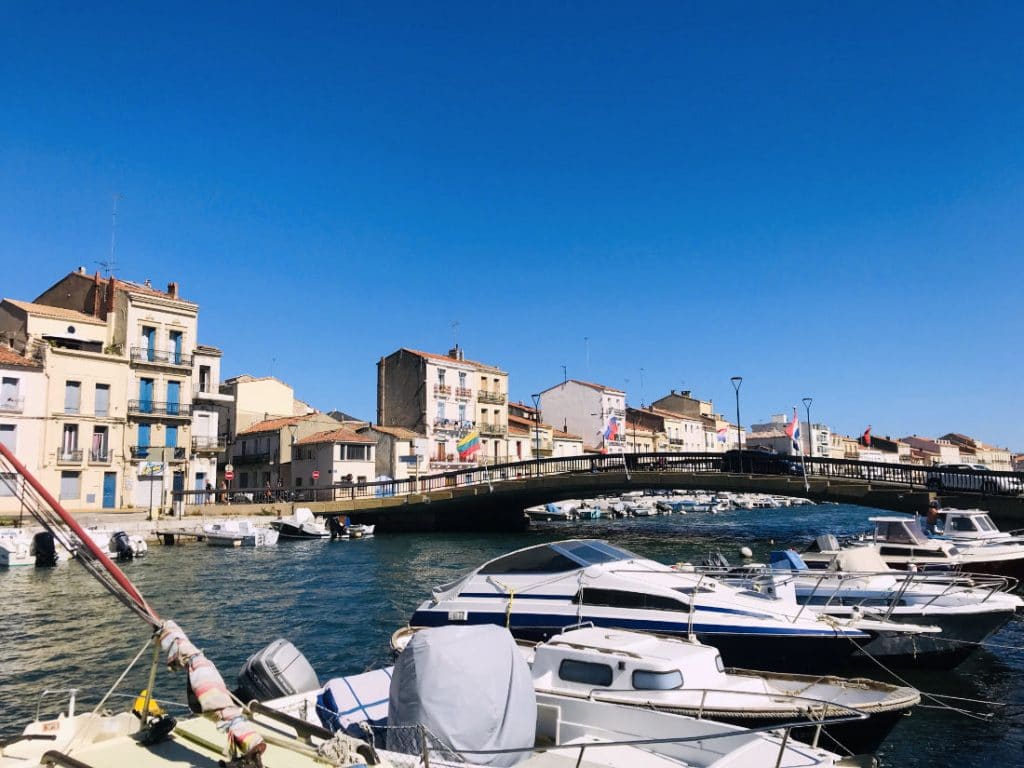
The town has a population of around 45,000 and is part of the Montpellier-Sète urban area. A large fishing town, it has a rich heritage of maritime history as well as gastronomy.
One of the first things you notice in Sète is its Royal Canal, the main artery of the city. With lovely pastel buildings lining the canal, dating from the 19th century, you will quickly fall in love with this part of the south of France. You can read more about Sète here.
How many locks are there?
There are 91 working locks along the Canal. The locks are fully automatic, operated by lock keepers who keep watch, and are free of charge.
Because they need to be operated by lock keepers, the locks only open and close during normal working hours. They do not operate during the lunch hour (12h30 et 13h30), nor on holidays.
Can you walk or bike along the Canal?
Yes, starting in Toulouse you can easily find pedestrian and bike paths that go the quais of the Canal du Midi. You can also take a bike tour with a guide who can arrange bike rentals as well as meals along the way.
Does the Canal du Midi flood?
Yes, there was significant flooding in 2018, after which the Voies Navigables de France, the government agency in charge, invested millions of euros to rehabilitate the locks and clear out existing debris to try to make sure that the flooding does not reoccur.
When is the best time to visit?
The Canal du Midi is known for its festival the “Festival Convivencia” which is held for 3 weeks annually in the month of July. The festival
is held on the Peniche Tourmente barge which is 30 meters long, that sails the 400 km up and down the Canal du Midi. The barge moors in various towns and villages, with its deck turning into a floating stage.
The river banks are filled by locals and tourists in a “guinguette spirit”, with participants offering food and drink. The festival aims to tell “A story along the water”, with actors and musicians bringing the past the life in song and dance.
Where to stay?
I would recommend staying in Carcassonne or Toulouse. Both cities make a great base to travel around to the historic Pont du Gard and other nearby cities like Nimes, Montpellier, Avignon, Sète, Uzès, Martigues, etc.
Carcassonne:
- €€€ – Hôtel du Pont-Vieux
- €€€€€ – Hôtel de la Cité et Spa
Toulouse:
- €€€ – Hôtel Le Père Léon
- €€€€ – Crowne Plaza Toulouse
- €€€€€ – La Cour des Consuls Hotel and Spa Toulouse

If you enjoyed that article, you may want to read more about traveling around the Occitanie region of France. A bientôt!
